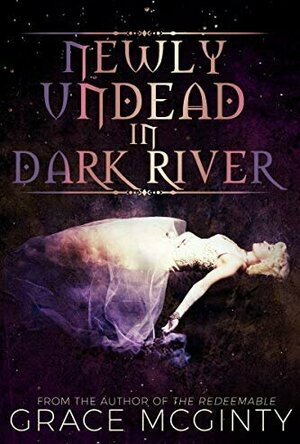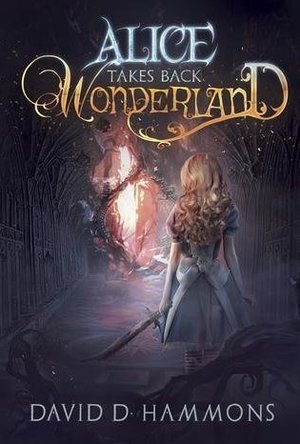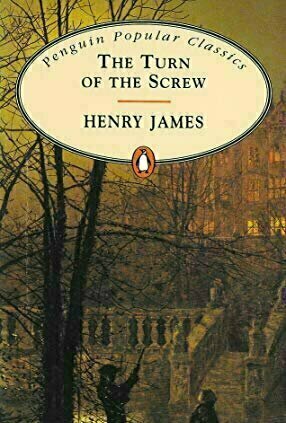
Salinger
David Shields and Shane Salerno
Book
Based on eight years of exhaustive research and exclusive interviews with more than 200 people-and...

The Search for the Rarest Bird in the World
Book
In 1990 an expedition of Cambridge scientists arrived at the Plains of Nechisar, tucked between the...

Audrey at Home: Memories of My Mother's Kitchen
Book
New York Times Bestseller Enter Audrey Hepburn's private world in this unique New York Times...
Leanne Crabtree (480 KP) rated Newly Undead in Dark River (Dark River Days, #1) in Books
Jan 6, 2021
I'm glad I did.
This starts with Mika waking up in a storm drain at some point in the night and wandering into a small town called Dark River, which is home to vampires. It turns out that one of the inhabitants killed her and turned her and local sheriff Walker Walton tries to find out who as Mika settles into the town she can never really leave again. Add in drifter Judge, and shape shifter Brody, and Mika finds herself caught in a little reverse harem that she grows to love.
I was intrigued over who Mika/Raine's creator was. It seemed like everyone was really welcoming and showed her no ill will so to find out who it was did come as a bit of a shock but they did have a bit of a good reason for it.
I actually enjoyed the reverse harem side of this one. Some just seem to instantly happen whereas this one, each guy came about in their own time. It wasn't all at once. Some tried to fight it, some gave in straight away. There were some really sizzling scenes of threesomes with the guys having a little fun with each other too.
One thing I do have a little complaint about is the editing. It has a handful of errors throughout with words repeated or sentences that appear to have been changed slightly but left the previous word in there, too. It doesn't take away from the story but it just niggles me a little.
The story was well written and had been thought out. I am very intrigued by this group of lovers and the town of Dark River and can't help wondering what is next in store for them, so I will be buying book 2 soon.

My Heart & Soul (Lyrics of Love #11)
Book
She left without a goodbye. He’s moved on with a new life. When they’re forced on a road trip...
Contemporary Romance

Their Bounty (Four Mercenaries #1)
Book
--- Taken. Prized. Possessed. Loved. --- Clover is an orphan and has led a tough and chaotic...
Dark Harem Romance LGBTQ+
Hazel (1853 KP) rated Alice Takes Back Wonderland in Books
Dec 14, 2018
When a book starts with “‘Do you know fairy tales are real’ asked the cat,” you know you are in for a magical ride. Nearly everyone knows the tale of the seven-year-old girl from nineteenth century London who falls down a rabbit hole and spends a day of madness in the magical world of Wonderland. In David D. Hammons version, however, Alice was a young girl from twenty-first century Missouri. On her return to the real world she was diagnosed with ADHD and Schizophrenia and forced to believe that the Cheshire Cat and the Mad Hatter were figments of her imagination. But ten years later a white rabbit appears and leads Alice back to the world where nothing makes sense.
All is not well in Wonderland. The Cheshire Cat is dead and the Ace of Spades is in charge. Barely anything is the way Alice remembers. Everything looks far too “normal” and similar to the world she comes from. Ace is determined to remove the wonder from Wonderland and create a place where madness is forbidden. Alice has a big fight on her hands as she tries to end this former playing card’s tyrannous reign and restore Wonderland back to its original insanity.
<i>Alice Takes Back Wonderland</i> is not purely a retelling of Lewis Carrols famous story. Although many of the well known and loved characters appear in this book, so do others from a variety of different fairytales: <i>Peter Pan, Pinocchio</i>, and various tales from the <i>Brothers Grimm</i>. As readers will discover, all is not exactly as it should be for these characters either. Despite them being contrasting, magical stories, Hammons has successfully merged them all together in an imaginative manner resulting in a humorous young adult novel.
Although mostly focused on the goings on in Wonderland and the other fictional locations, it is also a subtle metaphor to describe what Alice’s life had been like back in present day America. For a decade Alice was forced to take medication to help her understand the difference between reality and fantasy. It got rid of most of the nonsense thoughts she picked up during her first visit to Wonderland. In a way, that is what the Ace of Spades is doing to characters he believes are mad. He is taking the wonder out of them, just like the pills to the wonder out of Alice.
Lovers of fairytales will definitely love this book, especially those who grew up loving <i>Alice in Wonderland</i> and <i>Peter Pan</i>. In some ways it is a continuation of the original tale, yet in other ways it could be viewed as an alternative way the story could have gone. Primarily targeted at young adults, <i>Alice Takes Back Wonderland</i> is much darker than Carrols version and combines a mix of real life with fantasy. It also goes to show that no one is too old for fairytales!

Remind Me (Mystic Beach Fantasy Rockstar Romances, #4)
Book
Recipe for a Delicious Love Story: • 1 spicy rockstar • 1 salty chef • a sweet first love ...
Paranormal RockStar Romance
MaryAnn (14 KP) rated A Very Austen Valentine in Books
Nov 4, 2019
I Dream of You by Robin Helm
Newly-married Elizabeth Darcy has a plan: to charm her too-busy husband into desiring her company as much as he did when he was courting her. A series of romantic dreams gives her just the push she needs to put that plan into action.
Sir Walter Takes a Wife by Laura Hile
Faced with a lonely future and finding himself strapped for cash, Persuasions Sir Walter Elliot manfully decides to marry again. But his careful plans go sadly awry! A lighthearted Valentine mash-up featuring two of Jane Austens worst snobs.
My Forever Valentine by Wendi Sotis
Jane and Charles Bingley have married, even though Miss Elizabeth Bennet remains certain Mr. Fitzwilliam Darcy gave his best effort to keep them apart. After Mr. Darcy refused to stand up with Bingley and did not attend the wedding, she despises the gentleman more than ever and finds his company intolerable. How will she endure her visit to Kent if Mr. Darcy turns up everywhere she goes?
Pretence and Prejudice by Barbara Cornthwaite
A chance encounter with a handsome stranger forces Elizabeth to resort to subterfuge in order to discover his true intentions.
My Valentine by Mandy H. Cook Mandy H. Cook
Little Charlotte was always determined and independent, traits which served her well as she battled a serious childhood illness and later as she took on Polite Society. Will those traits now deprive her of true love? Or would her lifelong Valentine win her heart?
The Lovers Ruse by Susan Kaye
In this Persuasion alteration, Anne is so altered by Wentworths love in the summer of 1806, she refuses to give him up when both her godmother and father try to persuade her. The Lovers Rusefollows Frederick and Anne through their whirlwind courtship and their secret engagement. When Wentworth returns for his Annie girl, the cat comes out of the bag.
My Thoughts: These six charming novellas centered around Valentines will entice all those who adore Jane Austen's writings. Based on characters from Jane Austen's novels; I enjoyed reading into the lives of the Darcy's; I was impressed that the writers Robin Helm, Wendi Sotis and Mandy H. Cook are all centered their novellas around the same family. Each storytelling its own unique view of their lives.
Each story is fun to read, and takes the reader back to a simpler time, of love, romance, and proper etiquette. Each story has it's own charm and brings the reader closer to the characters.
My favorites have to be the novellas containing the characters Elizabeth and Fitzwilliam Darcy, my absolute favorite being "I Dream of You". In this novella we learn how to give rather than to receive and the joys we can draw from each act of kindness.
If you love historical fiction, and Jane Austen novels, then this is certainly a book for you.
Hadley (567 KP) rated The Turn of the Screw in Books
Mar 24, 2020 (Updated Mar 24, 2020)
With only 93 pages and the viewpoint of a governess, the story is one that has been up for debate as to its meaning for over a century, a story that blends child abuse and ghostly possession way ahead of its time. But even with its great plot, the story falls short and becomes bland throughout most of its short pages.
So why is the meaning of the Turn of the Screw still being debated? There's only one thing that has caused that --- it's in the way that James wrote the story, nothing is explained and everything is vague, these being very important parts that can keep this book from being enjoyable to many readers. Here's a summary of the story: a woman becomes governess of two children, one of which is sent home from school (technically expelled, in today's terms), the entire book has this woman trying to figure out why the child was sent home, but with ghosts thrown into the mix.
The story starts off with a man telling this ghost story from letters he received from a woman (the governess). But, even at the end of the book, the story never turns back to the man finishing the letters, yet this was done so masterfully that when you are done with the book, you completely forget about the man at the beginning, something that isn't easily done today in most writing. The man is reading these letters to a small audience that is also never revealed why, something that will seem completely irrelevant for the reader.
Readers finally get their paranormal fix when our main character, the governess, sees her first ghost in the Turn of the Screw. Our governess goes on an isolated walk when she spots an older man staring at her from a tower on the estate. But not until after a second encounter with this man, she decides to tell a housemaid about it, who quickly knows whom she speaks of. The maid is very certain that the man the governess has spotted twice is a deceased man that used to work for the family, but the maid is terrified by this because this man seems to have been abusive towards the son of the family and now seems to be continuing to torment him even after death.
Our governess seems to go down a path of paranoia as she seems to believe that the children are seeing the ghosts, too, but refusing to tell her so, and she becomes convinced that the key to getting them to confess is to finding out why the boy was sent home from school in the first place. She tries many times to get him to tell her why, but lets him take control of the conversations where he is able to divert the attention to something else. When things seem to be too much for the governess and housemaid to handle, they decide to try to write the childrens' uncle, and ask him to visit - - - this being the uncle that hired the governess and asked to never be bothered by her again, and that he wants nothing to do with his niece and nephew ever again, and especially don't write to him about any problems.
James is considered one of the greatest authors of the English language, but although this novella did very well, he wasn't known for ghost stories. His most popular book is 'the Portrait of a Lady,' which is about a young woman who comes into a large amount of money only to have it stolen by two con-men. Being that he is a Victorian-era writer, you can expect the overly long paragraphs and descriptions that the time was known for in 'the Turn of the Screw.' I personally felt the story had too many interludes of the governess' thoughts and ideas, which border on rambling. There seemed no point in the governess obsessing over why the boy was sent home from school when there are ghosts tormenting them at home- - - how this mode was suppose to work has left me clueless.
It's a usual horror trope to have children being possessed as the core of a book because it's something that can shake adults to their core at the thought that their own children could be that vulnerable. But James was way ahead of his time in the Turn of the Screw. He was able to put together psychological standpoints that weren't even discussed in his time, bouncing between child abuse with those children acting out to the power that abusers can still hold over their victims, even after death.
I'm giving the story a high rating, although I really didn't enjoy it. Why? Because it was a great idea and it was well written. If James hadn't been so vague on key parts, and hadn't left readers with a shocking unexplained ending, then maybe I would have liked it more. I can only recommend this book to people who like Victorian ghost stories, but for paranormal lovers, I think it falls short.



